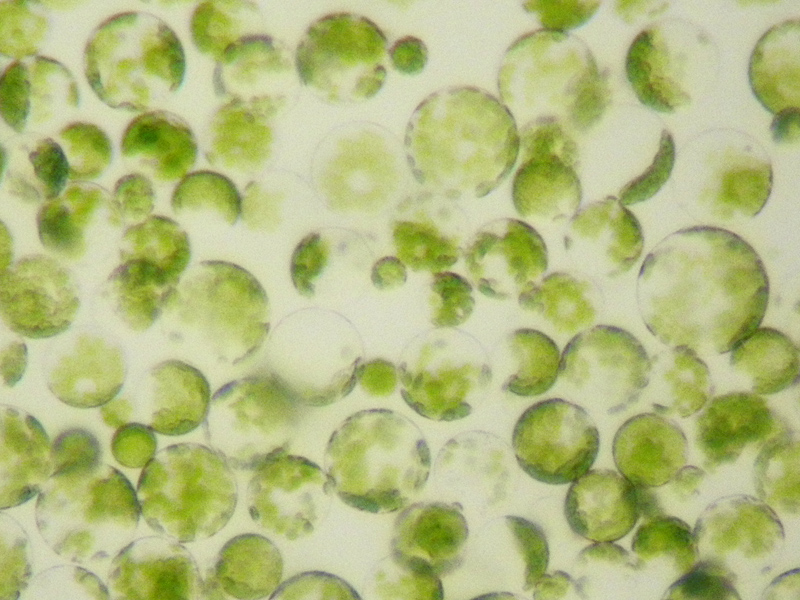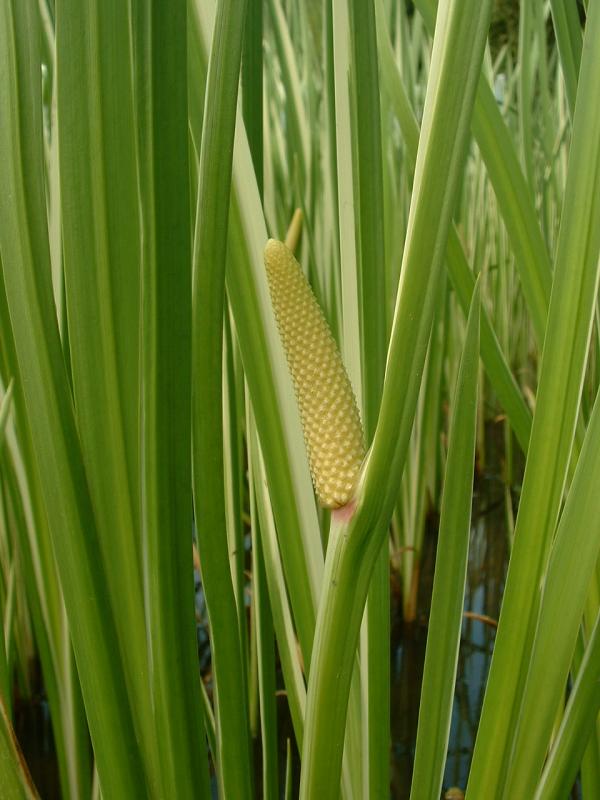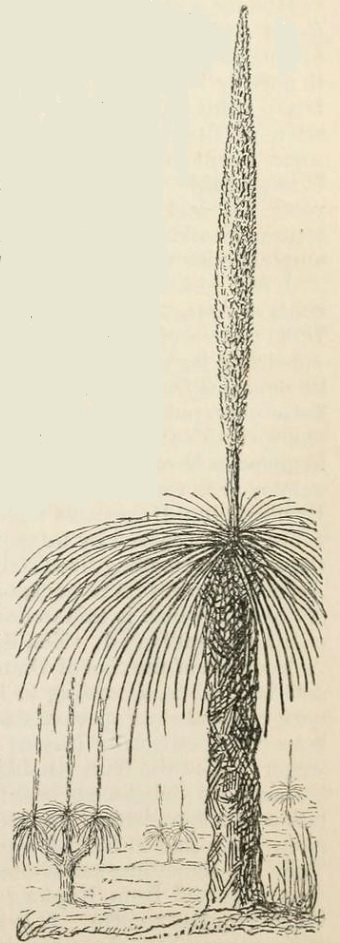|
Tapetum (botany)
The tapetum is a specialised layer of nutritive cells found within the anther of flowering plants, located between the sporogenous tissue and the anther wall. Tapetum is important for the nutrition and development of pollen grains and a source of precursors for the pollen coat.P.L. Polowick, V.K. Sawhney 1993Differentiation of the Tapetum During Microsporogenesis in Tomato (Lycopersicon esculentum Mill.), with Special Reference to the Tapetal Cell Wall Annals of Botany, Volume 72, Issue 6, December 1993, Pages 595–605 The cells are usually bigger and normally have more than one nucleus per cell. As the sporogenous cells undergo mitosis, the nuclei of tapetal cells also divide. Sometimes, this mitosis is abnormal, which is why many cells of mature tapetum become multinucleated. Polyploidy and polyteny can also be seen sometimes. The tapetum's unusually large nuclear constitution helps it provide nutrients and regulatory molecules to the forming pollen grains. The following pro ... [...More Info...] [...Related Items...] OR: [Wikipedia] [Google] [Baidu] |
Multinucleate
Multinucleate cells (also known as multinucleated cells or polynuclear cells) are eukaryotic cells that have more than one nucleus, i.e., multiple nuclei share one common cytoplasm. Mitosis in multinucleate cells can occur either in a coordinated, synchronous manner where all nuclei divide simultaneously or asynchronously where individual nuclei divide independently in time and space. Certain organisms may have a multinuclear stage of their life cycle. For example, slime molds have a vegetative, multinucleate life stage called a plasmodium. Multinucleate cells, depending on the mechanism by which they are formed, can be divided into "syncytia" (formed by cell fusion) or " coenocytes" (formed by nuclear division not being followed by cytokinesis). Some bacteria, such as '' Mycoplasma pneumoniae'', a pathogen of the respiratory tract, may display multinuclear filaments as a result of a delay between genome replication and cellular division. Terminology Some biologists use ... [...More Info...] [...Related Items...] OR: [Wikipedia] [Google] [Baidu] |
Locule
A locule (: locules) or loculus (; : loculi) is a small cavity or compartment within an organ or part of an organism (animal, plant, or fungus). In angiosperms (flowering plants), the term ''locule'' usually refers to a chamber within an ovary (gynoecium or carpel) of the flower and fruits. Depending on the number of locules in the ovary, fruits can be classified as (uni-locular), , , or . The number of locules present in a gynoecium may be equal to or less than the number of carpels. The locules contain the ovules or seeds. The term may also refer to chambers within anthers containing pollen. In ascomycetous fungi, locules are chambers within the hymenium The hymenium is the tissue layer on the hymenophore of a fungal fruiting body where the cells develop into basidia or asci, which produce spores. In some species all of the cells of the hymenium develop into basidia or asci, while in oth ... in which the perithecia develop. References Plant anatomy Plant ... [...More Info...] [...Related Items...] OR: [Wikipedia] [Google] [Baidu] |
Protoplasts
Protoplast (), is a biological term coined by Hanstein in 1880 to refer to the entire cell, excluding the cell wall. Protoplasts can be generated by stripping the cell wall from plant, bacterial, or fungal cells by mechanical, chemical or enzymatic means. Protoplasts differ from spheroplasts in that their cell wall has been completely removed. Spheroplasts retain part of their cell wall. In the case of Gram-negative bacterial spheroplasts, for example, the peptidoglycan component of the cell wall has been removed but the outer membrane component has not. Enzymes for the preparation of protoplasts Cell walls are made of a variety of polysaccharides. Protoplasts can be made by degrading cell walls with a mixture of the appropriate polysaccharide-degrading enzymes: During and subsequent to digestion of the cell wall, the protoplast becomes very sensitive to osmotic stress. This means cell wall digestion and protoplast storage must be done in an isotonic solution to prevent ... [...More Info...] [...Related Items...] OR: [Wikipedia] [Google] [Baidu] |
Canna (plant)
''Canna'' or canna lily is a genus of flowering plants consisting of 10 species. It is the only genus in the family Cannaceae.The Cannaceae of the World, Hiltje Maas-van de Kamer, H. Maas-van der Kamer & Paulus Johannes Maria Maas, P.J.M. Maas, BLUMEA 53: 247–318 All of the genus's species are native to the Neotropical realm, American tropicsLamarck, Jean-Baptiste. ''Botanical Encyclelopédie''. and were naturalized in Europe, India and Africa in the 1860s.Chaté, E. (1867).'' Le Canna, son histoire, sa culture. ''Libraire Centrale d'Agriculture et de Jardinage Although they grow native to the tropics, most cultivars have been developed in temperateness, temperate climates and are easy to grow in most countries of the world, as long as they receive at least 6–8 hours average sunlight during the summer, and are moved to a warm location for the winter. See the Canna (Plant) Gallery, ''Canna'' cultivar gallery for photographs of ''Canna'' cultivars. Cannas are not true lili ... [...More Info...] [...Related Items...] OR: [Wikipedia] [Google] [Baidu] |
Monocots
Monocotyledons (), commonly referred to as monocots, ( Lilianae '' sensu'' Chase & Reveal) are flowering plants whose seeds contain only one embryonic leaf, or cotyledon. A monocot taxon has been in use for several decades, but with various ranks and under several different names. The APG IV system recognises its monophyly but does not assign it to a taxonomic rank, and instead uses the term "monocots" to refer to the group. Monocotyledons are contrasted with the dicotyledons, which have two cotyledons. Unlike the monocots however, the dicots are not monophyletic and the two cotyledons are instead the ancestral characteristic of all flowering plants. Botanists now classify dicots into the eudicots ("true dicots") and several basal lineages from which the monocots emerged. The monocots are extremely important economically, culturally, and ecologically, and make up a majority of plant biomass used in agriculture. Common crops such as dates, onions, garlic, rice, wheat, maize, and ... [...More Info...] [...Related Items...] OR: [Wikipedia] [Google] [Baidu] |
Acorales
''Acorus'' is a genus of monocot flowering plants. This genus was once placed within the family Araceae (aroids), but more recent classifications place it in its own family Acoraceae and order Acorales, of which it is the sole genus of the oldest surviving line of monocots. Some older studies indicated that it was placed in a lineage (the order Alismatales), that also includes aroids (Araceae), Tofieldiaceae, and several families of aquatic monocots (e.g., Alismataceae, Posidoniaceae). However, modern phylogenetic studies demonstrate that ''Acorus'' is sister to all other monocots. Common names include calamus and sweet flag. The genus is native to North America and northern and eastern Asia, and naturalised in southern Asia and Europe from ancient cultivation. The known wild populations are diploid except for some tetraploids in eastern Asia, while the cultivated plants are sterile triploids, probably of hybrid origin between the diploid and tetraploid forms. Characteris ... [...More Info...] [...Related Items...] OR: [Wikipedia] [Google] [Baidu] |
Clade
In biology, a clade (), also known as a Monophyly, monophyletic group or natural group, is a group of organisms that is composed of a common ancestor and all of its descendants. Clades are the fundamental unit of cladistics, a modern approach to taxonomy adopted by most biological fields. The common ancestor may be an individual, a population, or a species (extinct or Extant taxon, extant). Clades are nested, one in another, as each branch in turn splits into smaller branches. These splits reflect evolutionary history as populations diverged and evolved independently. Clades are termed ''monophyletic'' (Greek: "one clan") groups. Over the last few decades, the cladistic approach has revolutionized biological classification and revealed surprising evolutionary relationships among organisms. Increasingly, taxonomists try to avoid naming Taxon, taxa that are not clades; that is, taxa that are not Monophyly, monophyletic. Some of the relationships between organisms that the molecul ... [...More Info...] [...Related Items...] OR: [Wikipedia] [Google] [Baidu] |
Alismatales
The Alismatales (alismatids) are an order of flowering plants including about 4,500 species. Plants assigned to this order are mostly tropical or aquatic. Some grow in fresh water, some in marine habitats. Perhaps the most important food crop in the order is the taro plant, ''Colocasia esculenta''. Description The Alismatales comprise herbaceous flowering plants of often aquatic and marshy habitats, and the only monocots known to have green embryos other than the Amaryllidaceae. They also include the only marine angiosperms growing completely submerged, the seagrasses. The flowers are usually arranged in inflorescences, and the mature seeds lack endosperm. Both marine and freshwater forms include those with staminate flowers that detach from the parent plant and float to the surface. There they can pollinate carpellate flowers floating on the surface via long pedicels. In others, pollination occurs underwater, where pollen may form elongated strands, increasing chance of suc ... [...More Info...] [...Related Items...] OR: [Wikipedia] [Google] [Baidu] |
Lilioid Monocots
Lilioid monocots (lilioids, liliid monocots, petaloid monocots, petaloid lilioid monocots) is an informal name used for a grade (biology), grade (grouping of taxa with common characteristics) of five monocot order (biology), orders (Petrosaviales, Dioscoreales, Pandanales, Liliales and Asparagales) in which the majority of species have flowers with relatively large, coloured tepals. This characteristic is similar to that found in Lilium, lilies ("lily-like"). Petaloid monocots refers to the flowers having tepals which all resemble petals (petaloid). The taxonomic terms Lilianae or Liliiflorae have also been applied to this assemblage at various times. From the early nineteenth century many of the species in this group of plants were put into a very broadly defined family, Liliaceae ''sensu lato'' or ''s.l.'' (lily family). These classification systems are still found in many books and other sources. Within the monocots the Liliaceae ''s.l.'' were distinguished from the Glumaceae. ... [...More Info...] [...Related Items...] OR: [Wikipedia] [Google] [Baidu] |




